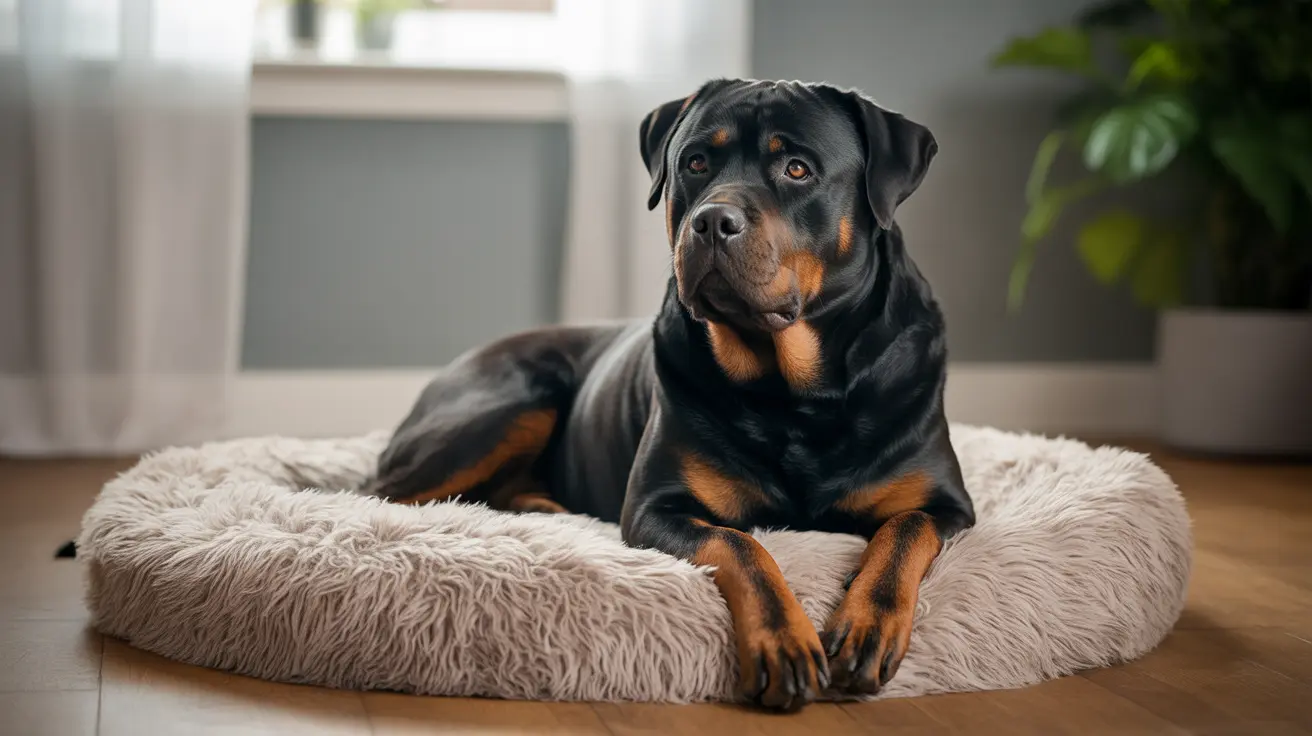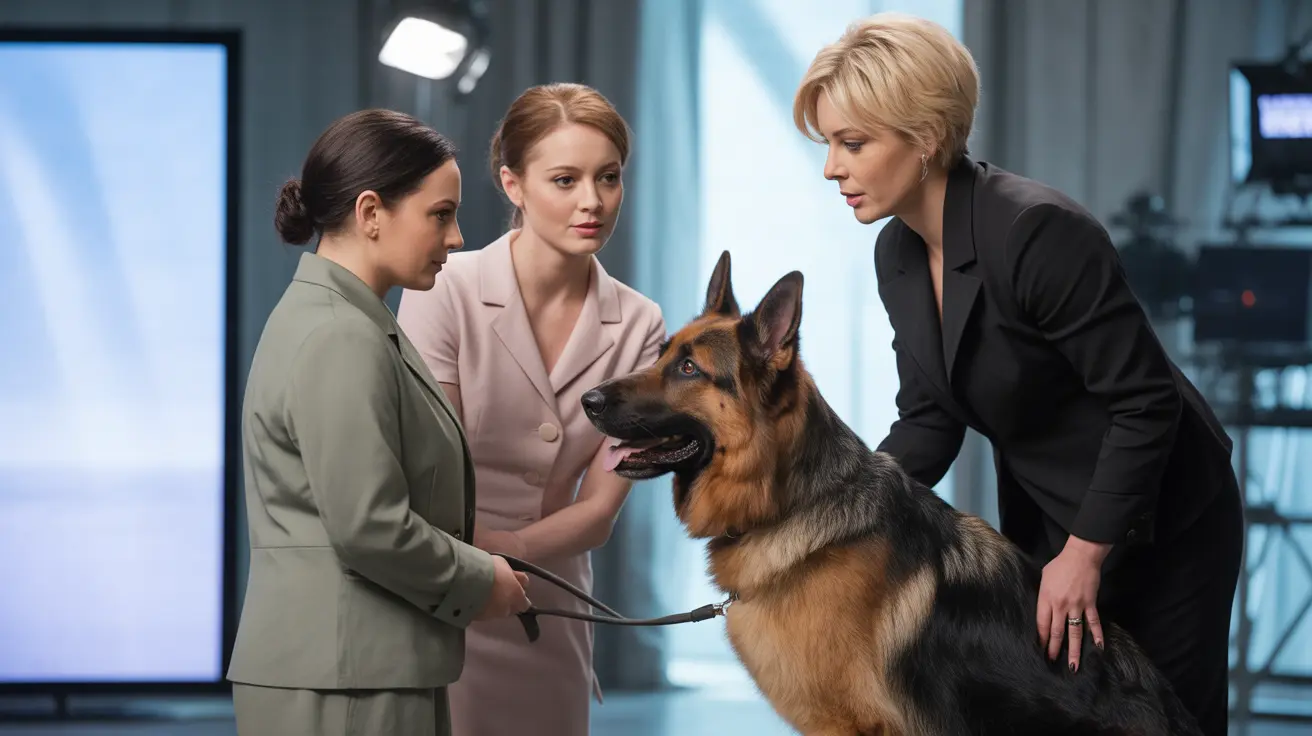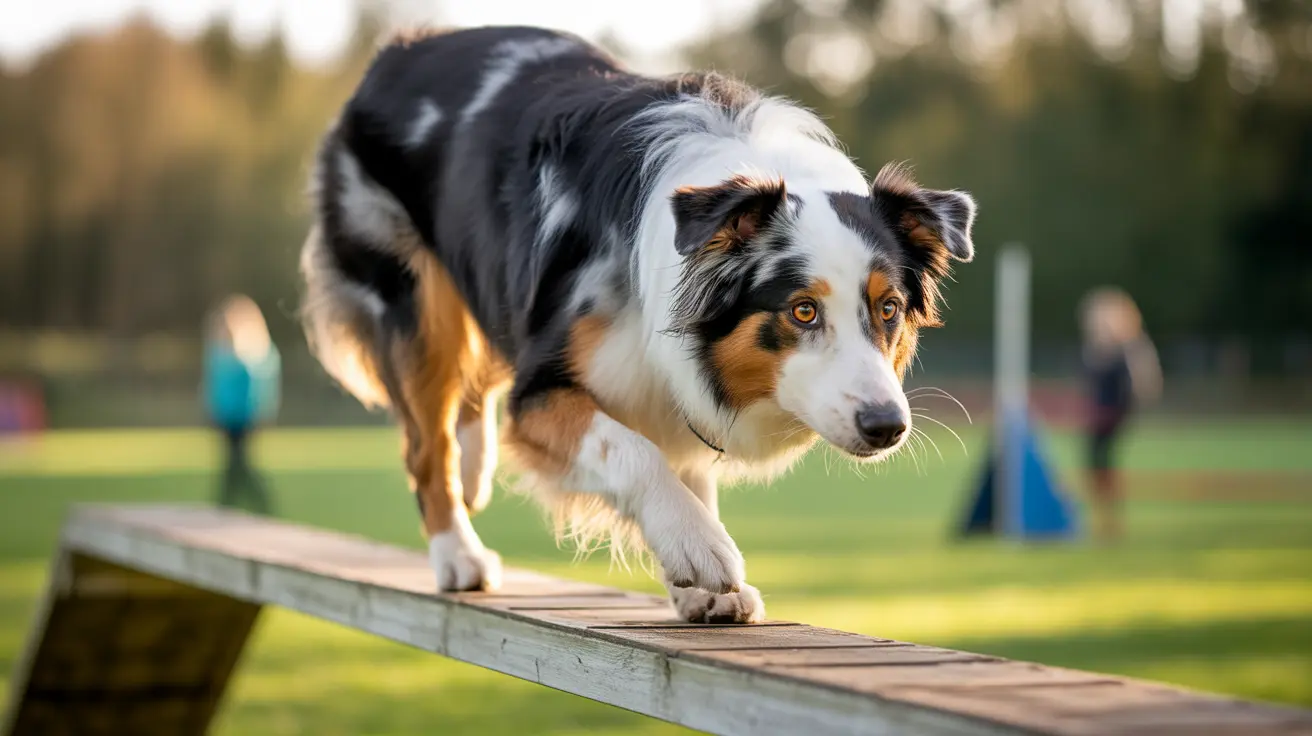Indoor Dog Cameras for Monitoring Pet Behavior: Your Complete Guide to Peace of Mind
If you're among the many dog owners who worry about what happens when you leave your furry companion home alone, you're not alone in your concerns. More than half of dog owners regularly leave their dogs at home for limited periods, yet only 41% feel truly relaxed about it. This anxiety is understandable—our pets can't tell us how they're feeling or what they're doing when we're away, leaving us to wonder and worry about their wellbeing.
Indoor dog cameras for monitoring pet behavior have emerged as a game-changing solution for concerned pet parents. These innovative devices offer a window into your dog's world when you're not there, providing real-time insights into their activities, behaviors, and emotional state. From catching adorable sleeping positions to identifying potential behavioral issues before they escalate, pet monitoring cameras can transform how you understand and care for your dog during alone time.
In this comprehensive guide, we'll explore how indoor cameras can help you monitor and manage your dog's behavior, what features to look for, and how to use this technology as part of a holistic approach to ensuring your pet's happiness and security when home alone.
Understanding What Dogs Really Do When Left Alone
Before diving into camera solutions, it's crucial to understand the natural behaviors dogs exhibit when left alone. Dogs typically sleep 12 to 14 hours per day, and much of their alone time is spent resting and recharging. However, their activities can vary significantly based on personality, age, breed, and environment.
Common behaviors include exploring their surroundings through sniffing and investigating, playing with available toys, engaging in self-grooming activities, and maintaining alertness by watching and listening from windows or doors. Many dogs position themselves near entry points, responding to familiar sounds and watching for their owner's return. This vigilant behavior is completely normal and shows their strong bond with their human family.
However, not all alone-time behaviors are benign. Some dogs exhibit signs of distress including excessive barking or vocalizing, destructive chewing of furniture or personal items, inappropriate urination or defecation indoors, and restless pacing or anxiety-driven behaviors. These concerning behaviors often stem from separation anxiety, insufficient mental and physical stimulation, or incomplete training—issues that indoor cameras can help you identify and address.
How Indoor Cameras Transform Pet Monitoring
Indoor dog cameras for monitoring pet behavior provide unprecedented insight into your dog's alone-time activities. Unlike traditional pet care approaches that rely on guesswork or post-incident discovery, cameras offer real-time observation that can help prevent problems before they escalate.
The primary benefit of pet monitoring cameras is the ability to observe natural behaviors without your presence influencing your dog's actions. This unfiltered view helps you understand whether concerning behaviors occur immediately after departure, during specific times of day, or in response to particular triggers like neighborhood sounds or weather changes.
Many modern pet cameras feature two-way audio capabilities, allowing you to interact with your dog remotely. This feature enables real-time behavior correction—you can redirect destructive behaviors, provide comfort during anxious moments, or simply offer reassurance with familiar voice commands. Some dogs respond remarkably well to hearing their owner's voice, often settling into calmer behaviors almost immediately.
Essential Camera Features for Effective Pet Monitoring
When selecting indoor dog cameras for monitoring pet behavior, certain features are crucial for maximizing effectiveness and value. Video quality stands as the foundation—look for cameras offering at least 1080p HD resolution to clearly observe your dog's facial expressions, body language, and specific behaviors that might indicate stress or contentment.
Two-way audio functionality allows for remote interaction and behavior modification. This feature proves invaluable when you observe unwanted behaviors developing, as immediate verbal correction can prevent escalation. Motion detection alerts notify you when significant activity occurs, helping you identify patterns in your dog's behavior throughout the day.
Night vision capabilities ensure continuous monitoring regardless of lighting conditions, while wide-angle lenses capture more of your living space. Some advanced cameras include treat dispensing mechanisms, allowing you to reward good behavior remotely and maintain positive associations with alone time.
Mobile app integration enables monitoring from anywhere with internet access, while cloud storage preserves footage for later review and pattern analysis. Battery backup ensures continuous operation during power outages, and sturdy mounting options prevent curious pets from displacing the camera.
Interpreting Dog Behaviors Through Camera Observation
Understanding what you're seeing through your pet camera requires knowledge of canine body language and behavior patterns. Normal resting behavior includes finding comfortable spots for extended napping, changing positions periodically, and brief periods of alertness in response to outside sounds.
Healthy exploration involves calm sniffing around different areas, casual interaction with toys, and relaxed movement between rooms. Dogs displaying these behaviors are typically well-adjusted to alone time and experiencing minimal stress.
Concerning behaviors require immediate attention and intervention. Persistent pacing, excessive drooling, frantic scratching at doors or windows, and destructive chewing of inappropriate items often indicate separation anxiety or insufficient stimulation. Continuous barking, whining, or howling suggests distress that needs addressing through training, environmental changes, or professional intervention.
Watch for signs of medical issues through camera observation, including unusual bathroom habits, excessive drinking, lethargy, or changes in eating patterns. These behaviors may indicate health problems requiring veterinary attention rather than behavioral interventions.
Training Strategies to Reduce Problematic Alone-Time Behaviors
While cameras help identify issues, addressing problematic behaviors requires comprehensive training approaches. Gradual desensitization proves most effective—start with very short departures and gradually increase duration as your dog demonstrates comfort with being alone.
Establish consistent routines for feeding, exercise, and departure times. Dogs thrive on predictability, and routine helps reduce anxiety associated with owner departures. Provide substantial mental and physical stimulation before leaving through interactive games, training sessions, or vigorous exercise to help your dog settle into restful behavior.
Create positive associations with alone time by offering special toys or treats exclusively during your absence. Food-stuffed puzzle toys, treat-dispensing devices, or long-lasting chews help redirect attention from separation distress to rewarding activities.
Avoid making departures and arrivals emotionally charged events. Keep greetings calm and matter-of-fact to prevent building anxiety around your comings and goings. Practice departure cues like picking up keys or putting on coats without actually leaving to desensitize your dog to these triggers.
Managing Separation Anxiety Through Technology and Training
Separation anxiety represents a serious behavioral condition requiring comprehensive intervention strategies. Symptoms include distress upon owner departure, increased heart rate and breathing, excessive salivation, attempts to follow the owner, destructive behaviors, and frantic greetings upon return.
Camera monitoring helps document the severity and patterns of separation anxiety, providing valuable information for veterinarians or professional dog behaviorists. Recording specific triggers, duration of distress behaviors, and response to various interventions creates a comprehensive picture for treatment planning.
Professional counterconditioning and desensitization programs prove most effective for severe cases. These programs, taught by certified behaviorists, gradually change your dog's emotional response to being alone from anxiety to relaxation through systematic exposure and positive reinforcement.
In severe cases, veterinarians may prescribe anti-anxiety medications to support behavioral modification efforts. Never attempt to use punishment-based approaches, as these worsen anxiety and create negative associations with alone time.
Integrating Smart Home Technology for Enhanced Pet Care
Modern smart home integration amplifies the effectiveness of indoor dog cameras for monitoring pet behavior. Voice-activated devices like Amazon Alexa can be programmed to play calming music, nature sounds, or even recorded messages from owners at scheduled times throughout the day.
Smart treat dispensers connected to your monitoring system allow remote reward delivery when cameras capture positive behaviors. This immediate reinforcement strengthens good habits and creates positive associations with your absence.
Automated lighting systems can simulate your presence by adjusting lights throughout the day, potentially reducing anxiety in dogs sensitive to environmental changes. Climate control integration ensures your pet remains comfortable, as temperature stress can exacerbate behavioral issues.
Some advanced systems integrate with fitness trackers designed for dogs, providing comprehensive data about activity levels, rest patterns, and overall health metrics during alone time.
Creating the Optimal Environment for Alone Time Success
Beyond technology solutions, environmental management plays a crucial role in successful alone time experiences. Establish a safe, comfortable space with cozy bedding in a quiet area of your home. Remove potential hazards and inappropriate chew items while ensuring access to fresh water and appropriate toys.
Background noise from radio, television, or white noise machines can mask outside sounds that might trigger anxiety or excessive alertness. Many dogs find classical music or specially designed pet relaxation soundtracks particularly soothing.
Provide items with familiar scents such as recently worn clothing or favorite blankets to offer comfort and security. These scent anchors help maintain connection even during physical separation.
Ensure adequate ventilation and comfortable temperatures, as physical discomfort can contribute to restless or destructive behaviors. Consider blackout curtains if your dog becomes overstimulated by outside activity visible through windows.
When to Seek Professional Help
While indoor dog cameras for monitoring pet behavior provide valuable insights, some situations require professional intervention. Persistent destructive behaviors despite consistent training efforts, signs of severe separation anxiety lasting more than 30 minutes after departure, or any behaviors suggesting medical issues warrant expert consultation.
Certified dog behaviorists can design customized training programs based on camera footage and behavior patterns. Veterinarians can rule out medical causes for behavioral changes and prescribe appropriate treatments when necessary.
Don't hesitate to seek help early—behavioral issues typically become more challenging to resolve the longer they persist. Professional guidance combined with camera monitoring creates a comprehensive approach to addressing complex behavioral challenges.
Frequently Asked Questions
- How long can I safely leave my dog alone at home?
Most adult dogs can be left alone for 4-6 hours, though this varies by individual needs, age, and health. Puppies under 6 months shouldn't be alone for more than 2-3 hours. Senior dogs may need more frequent bathroom breaks. Use your camera to monitor stress levels and adjust accordingly.
- What camera features are most important for monitoring dog behavior?
Essential features include HD video quality for clear behavior observation, two-way audio for remote interaction, motion detection alerts, night vision capabilities, and reliable mobile app access. Wide-angle lenses and cloud storage for footage review are also valuable.
- Can indoor cameras help with house training issues?
Yes, cameras can help identify patterns in accidents, timing of bathroom needs, and whether issues stem from anxiety, incomplete training, or medical problems. This information helps create more effective house training strategies and identify when veterinary consultation is needed.
- How do I know if my dog's alone-time behavior is normal or concerning?
Normal behaviors include sleeping, calm exploration, playing with toys, and brief alertness to sounds. Concerning behaviors include persistent pacing, destructive chewing, continuous barking, signs of distress lasting more than 30 minutes, or any sudden changes in established patterns.
- Should I talk to my dog through the camera when they seem anxious?
Use two-way audio judiciously. Brief, calm reassurance can help some dogs, but excessive interaction may increase dependency and worsen separation anxiety. Focus on redirecting attention to positive activities rather than prolonged conversations.
- Can cameras replace proper exercise and training for dogs left alone?
No, cameras are monitoring tools that complement but never replace adequate physical exercise, mental stimulation, and proper training. Dogs need sufficient activity before being left alone to promote restful, calm behavior during your absence.
- What should I do if I observe destructive behavior through my camera?
Address destructive behavior through increased exercise, mental stimulation, appropriate chew toys, and gradual training to build comfort with alone time. If behaviors persist or worsen, consult a professional dog behaviorist for comprehensive intervention strategies.
Conclusion
Indoor dog cameras for monitoring pet behavior offer invaluable insights into your dog's alone-time experiences, transforming worry into understanding and reactive care into proactive management. While technology provides powerful monitoring capabilities, remember that cameras work best as part of a comprehensive approach including adequate exercise, mental stimulation, proper training, and environmental management.
The key to success lies in using camera observations to identify your dog's specific needs and responding with appropriate interventions. Whether addressing separation anxiety, preventing destructive behaviors, or simply gaining peace of mind about your pet's wellbeing, indoor monitoring cameras can strengthen the bond between you and your dog while ensuring their happiness and security when you're away.






